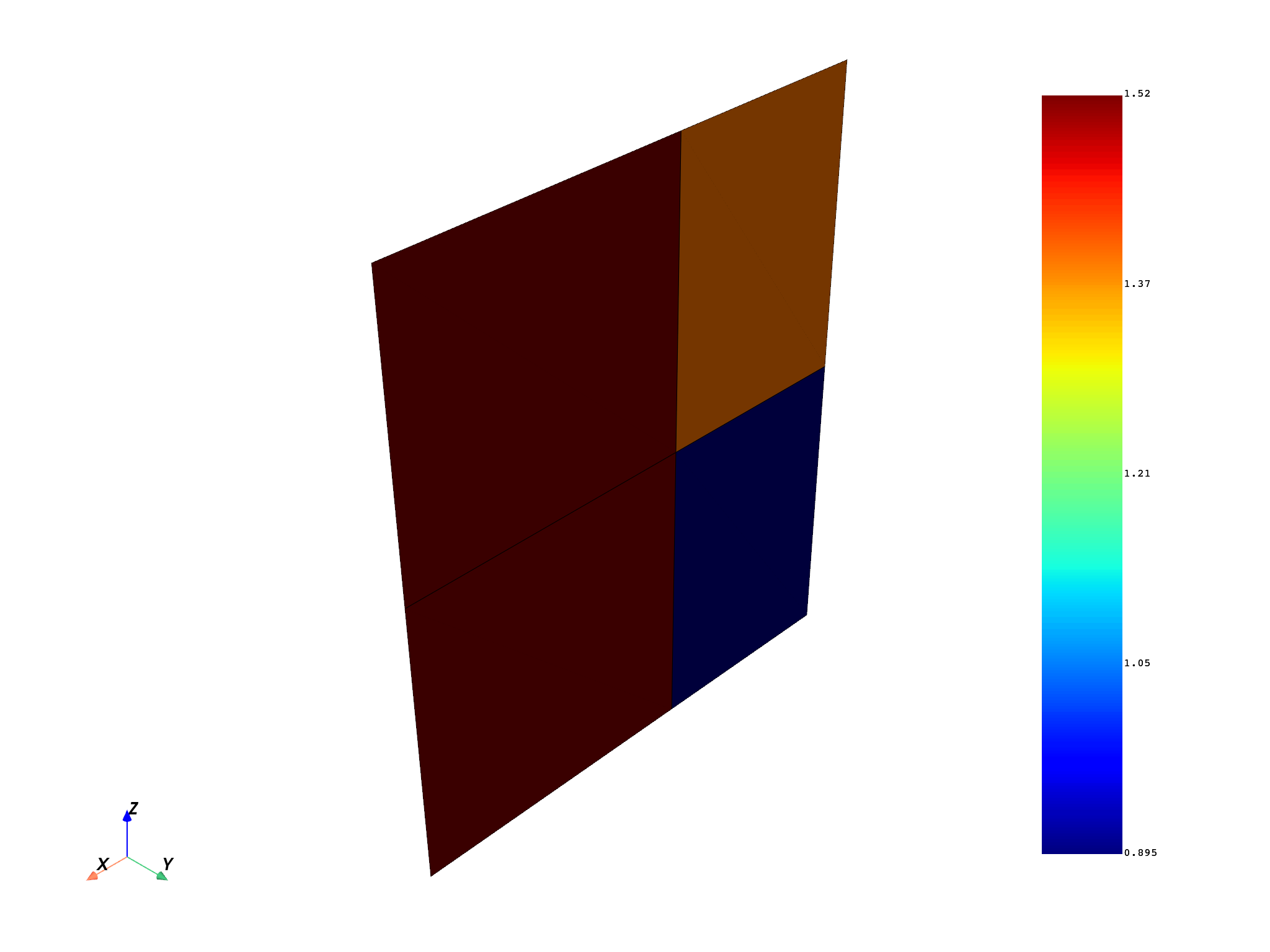Note
Go to the end to download the full example code.
Material properties and custom failure criterion#
This example shows how to access constant material properties and how to implement a custom failure criterion. The failure criterion is computed for all layers and integration points. Finally, the elemental maximum is computed and shown.
Note
Only constant material properties are currently supported.
Note
When using a Workbench project,
use the get_composite_files_from_workbench_result_folder()
method to obtain the input files.
Script#
Import dependencies
import ansys.dpf.core as dpf
import numpy as np
from ansys.dpf.composites.composite_model import CompositeModel
from ansys.dpf.composites.constants import Sym3x3TensorComponent
from ansys.dpf.composites.example_helper import get_continuous_fiber_example_files
from ansys.dpf.composites.layup_info.material_properties import MaterialProperty
from ansys.dpf.composites.select_indices import get_selected_indices
from ansys.dpf.composites.server_helpers import connect_to_or_start_server
Start a server and get the examples files. This will copy the example files into the current working directory.
Set up the composite model
composite_model = CompositeModel(composite_files_on_server, server)
Get dictionary that maps dpf_material_id to properties The creation of the dictionary is currently quite slow and should be done before using the properties in a loop. Currently only constant properties are supported. For variable material properties, the default value is returned.
material_property = MaterialProperty.Strain_Limits_eXt
property_dict = composite_model.get_constant_property_dict([material_property])
Get strain field
strain_operator = composite_model.core_model.results.elastic_strain()
strain_operator.inputs.bool_rotate_to_global(False)
strain_field = strain_operator.get_output(pin=0, output_type=dpf.types.fields_container)[0]
Implement a custom failure criterion: basic max strain
result_field = dpf.field.Field(location=dpf.locations.elemental, nature=dpf.natures.scalar)
with result_field.as_local_field() as local_result_field:
component = Sym3x3TensorComponent.TENSOR11
for element_id in strain_field.scoping.ids:
strain_data = strain_field.get_entity_data_by_id(element_id)
element_info = composite_model.get_element_info(element_id)
element_max = 0
for layer_index, dpf_material_id in enumerate(element_info.dpf_material_ids):
tensile_strain_limit_1 = property_dict[dpf_material_id][material_property]
selected_indices = get_selected_indices(element_info, layers=[layer_index])
# Tensile max strain criteria in 1 direction
layer_strain_values = strain_data[selected_indices][:, component]
if tensile_strain_limit_1 > 0:
layer_max = np.max(layer_strain_values)
element_max = max(element_max, layer_max / tensile_strain_limit_1)
# add to output field
local_result_field.append([element_max], element_id)
composite_model.get_mesh().plot(result_field)

Total running time of the script: (0 minutes 3.279 seconds)

